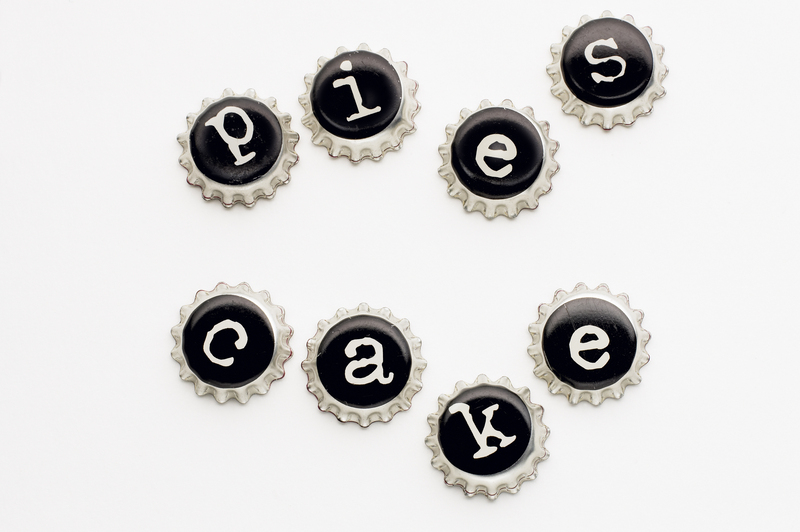Cardboard Disposal: Eco-Conscious Strategies in Packaging Industry
Introduction to Cardboard and Its Ubiquity in Packaging
Cardboard, often seen in boxes, shipping materials, and product packaging, plays a central role in the global supply chain. Cardboard packaging offers businesses a lightweight, sturdy, and adaptable solution to protect products during transit and on shelves. With the rise of e-commerce and increased consumerism, however, the volume of waste generated from cardboard materials is unprecedented.
As environmental concerns dominate 21st-century conversations, the spotlight has turned to eco-conscious cardboard disposal within the packaging industry. This article examines sustainable disposal practices, innovations reducing cardboard waste, and how companies can lead with eco-friendly packaging strategies.

Why Proper Cardboard Disposal Matters
Cardboard disposal isn't just about tossing boxes in the bin. Incorrect practices can add to landfill pressure, waste valuable resources, and even harm ecosystems. Recycling cardboard saves energy, water, and raw materials. In fact, recycling one ton of cardboard conserves over nine cubic yards of landfill space and saves 24% of the energy required to create new cardboard.
- Environmental preservation: Reducing landfill waste and deforestation
- Conservation of resources: Saving energy and water during recycling
- Economic benefits: Lowering costs for businesses and municipalities
- Brand reputation: Appealing to eco-conscious consumers
Challenges Facing Cardboard Disposal in Industry
The Scale of the Cardboard Waste Problem
The packaging industry faces a daunting challenge. According to the Environmental Protection Agency (EPA), Americans alone discard nearly 30 million tons of corrugated cardboard each year. While more than 90% is currently recycled, improper sorting, contamination, and inefficient disposal methods mean significant quantities still end up in landfills.
Contamination and Recycling Hurdles
Many businesses fail to maximize recycling rates due to contamination--mixing food, grease, or plastic with cardboard renders whole batches unrecyclable. The packaging sector must educate stakeholders and streamline processes to ensure clean, recyclable cardboard enters the correct waste streams.
Increasing Consumer Expectations
Today's consumers are more eco-conscious than ever. They demand sustainable packaging solutions and expect companies to take responsibility for post-consumer waste. For many brands, poor handling of cardboard disposal could harm brand image and customer loyalty.
Cardboard Recycling: The Cornerstone of Sustainable Disposal
Step-by-Step Guide: How Businesses Should Recycle Cardboard
- Collect and Sort: Accumulate used cardboard in designated containers. Separate from other waste streams to prevent contamination.
- Prepare Boxes: Remove non-cardboard materials like plastics, foams, and tape. Flatten boxes to save storage and transport space.
- Store Responsibly: Keep cardboard dry and protected from food or hazardous substances. Moisture or grease makes recycling difficult.
- Partner with Recyclers: Establish relationships with local recycling firms or municipal collection programs--some offer pickups for bulk cardboard.
- Educate Your Team: Train staff to recognize recyclable materials and ensure ongoing compliance.
Benefits of Cardboard Recycling
- Resource efficiency: Recycling cardboard uses approximately 25% less energy than manufacturing new cardboard from raw pulp.
- Emissions reduction: Mitigates greenhouse gas emissions associated with landfilling and raw material extraction.
- Closed-loop production: Enables the industry to operate on a more circular model, reducing the need for virgin resources.
Innovative Strategies for Sustainable Cardboard Disposal
1. Reuse and Repurposing Initiatives
Before recycling, consider cardboard reuse. Businesses can repurpose boxes for internal shipping, storage, or creative displays. Some companies have launched take-back programs where customers return used packaging, which is then sanitized for further use.
2. Transition to Biodegradable and Compostable Cardboard
A growing trend involves manufacturing biodegradable cardboard packaging. These solutions utilize non-toxic inks, adhesives, and coatings, allowing boxes to break down in home compost systems, not just industrial facilities.
3. Digital Solutions: Smart Packaging and IoT
The Internet of Things (IoT) is transforming cardboard management. Embedded sensors and tags can help companies track packaging life cycles, estimate disposal times, and gather data to fine-tune processing and logistics. Such smart packaging innovations lead to less waste overall.
4. Zero-Waste Packaging Programs
Industry leaders are embracing zero-waste initiatives, committing to recover, reuse, or recycle all packaging. These programs require collaboration across supply chains and customer engagement, but they significantly reduce landfill-bound materials.
Eco-Conscious Alternatives to Traditional Cardboard
The packaging industry continually explores eco-conscious disposal strategies by innovating beyond standard cardboard:
- Molded fiber packaging: Made from 100% recycled paper and cardboard--widely recyclable and compostable.
- Plant-based and agricultural waste packaging: Offers compostability and reduces reliance on wood pulp.
- Minimalist and modular designs: Uses less material while still protecting goods, reducing total waste volumes.
- Hybrid materials: Incorporates recycled plastics or alternative fibers for enhanced durability and recyclability.
Companies pioneering these solutions often tout them as a core part of their commitment to sustainable packaging solutions.
Best Practices for Businesses Seeking Sustainable Cardboard Disposal
1. Perform a Packaging Audit
Begin with a thorough evaluation of existing packaging materials and disposal methods. Identify the proportion of cardboard waste, sources of contamination, and inefficiencies in the process.
2. Engage Employees and Contractors
Create training programs so warehousing, logistics, and janitorial teams understand how to sort, store, and handle recyclable cardboard packaging. Offer incentives for teams that reduce waste or find innovative reuses for cardboard.
3. Design for Recycling and Reuse
Choose box sizes and shapes that maximize protection with minimal material use. Select inks and tapes compatible with recycling systems. Whenever possible, opt for packaging that's easily flattened and sorted.
4. Partner With Eco-Friendly Suppliers and Customers
- Source certified recycled cardboard for your own needs.
- Work with customers on take-back or drop-off programs for used packaging.
- Choose logistics partners who prioritize green practices.
5. Promote Your Packaging Sustainability
Consumers increasingly reward transparency. Use labeling to highlight recycling instructions, share your eco-friendly disposal process, and leverage eco-certifications to build trust and brand equity.
Case Studies: Leading the Way in Eco-Conscious Cardboard Disposal
Case 1: Amazon and Automated Recycling
E-commerce giant Amazon has invested in specialized equipment so their fulfillment centers automatically break down and bundle used cardboard. This closed-loop recycling system streamlines collection and increases recycling rates, drastically cutting waste.
Case 2: IKEA and Bulk Cardboard Collection
Furniture retailer IKEA encourages customers to bring packaging material back to store locations. These bulk returns enter a streamlined recycling system, ensuring contaminants are minimized and material is properly processed.
Case 3: Small Business Success Story
A boutique cosmetics company switched from plastic inner boxes to molded fiber inserts made of recycled cardboard. By educating customers on at-home composting, the company halved its landfill output in a single year--proof that even small changes matter.
Moving Toward a Circular Economy: The Future of Cardboard Disposal
The transition to a truly circular economy requires more than cardboard recycling--it demands rethinking the life cycle of packaging from design to disposal. Here's what lies ahead:
- New technologies: Enhanced sorting robots and AI improve recycling facility efficiency.
- Extended producer responsibility: Regulations may require companies to handle packaging waste post-sale.
- Consumer engagement: More clear labeling and incentives for recycling or composting at home.
- Material innovation: Ongoing research into new, functional, and sustainable packaging options.
Conclusion: Embrace Eco-Conscious Cardboard Disposal for Competitive Advantage
The imperative for eco-friendly cardboard disposal in the packaging industry is clear. As stakeholders throughout the value chain align with sustainable practices, the benefits multiply: reduced environmental impact, efficient operations, cost savings, and strengthened brand reputation.
To meet tomorrow's challenges, companies must move beyond compliance toward genuine stewardship--reusing and recycling cardboard wherever possible, adopting alternative materials, and championing a culture of responsible packaging at every turn.
Let your organization be a leader in the packaging revolution. By embracing the latest eco-conscious strategies for cardboard disposal, you shape not only the environmental future but the future success of your business.

Frequently Asked Questions About Cardboard Disposal in Packaging
-
What types of cardboard are recyclable?
Most clean, corrugated and paperboard cardboard used in packaging can be recycled. Contaminated, waxed, or laminated cardboard may not be accepted by all facilities. -
Is composting cardboard a viable option?
Yes, provided the cardboard is free of non-biodegradable coatings, inks, or adhesives. Shredded cardboard is excellent for home and industrial composting systems. -
What are the main barriers to effective cardboard disposal?
Contamination by food or liquids, confusion over sorting protocols, and lack of infrastructure remain significant challenges. -
How can brands communicate their sustainability efforts?
Use clear labeling, public reports, and marketing campaigns to inform customers of your eco-friendly cardboard disposal practices.
Your Next Steps Toward Smarter Cardboard Disposal
- Audit your current packaging waste streams for inefficiencies.
- Train staff and engage customers in recycling and reduction programs.
- Explore new materials and closed-loop partnerships with suppliers.
- Stay informed about local recycling requirements and industry innovations.
By acting today, your company can play a vital role in shaping a more sustainable tomorrow--one cardboard box at a time.